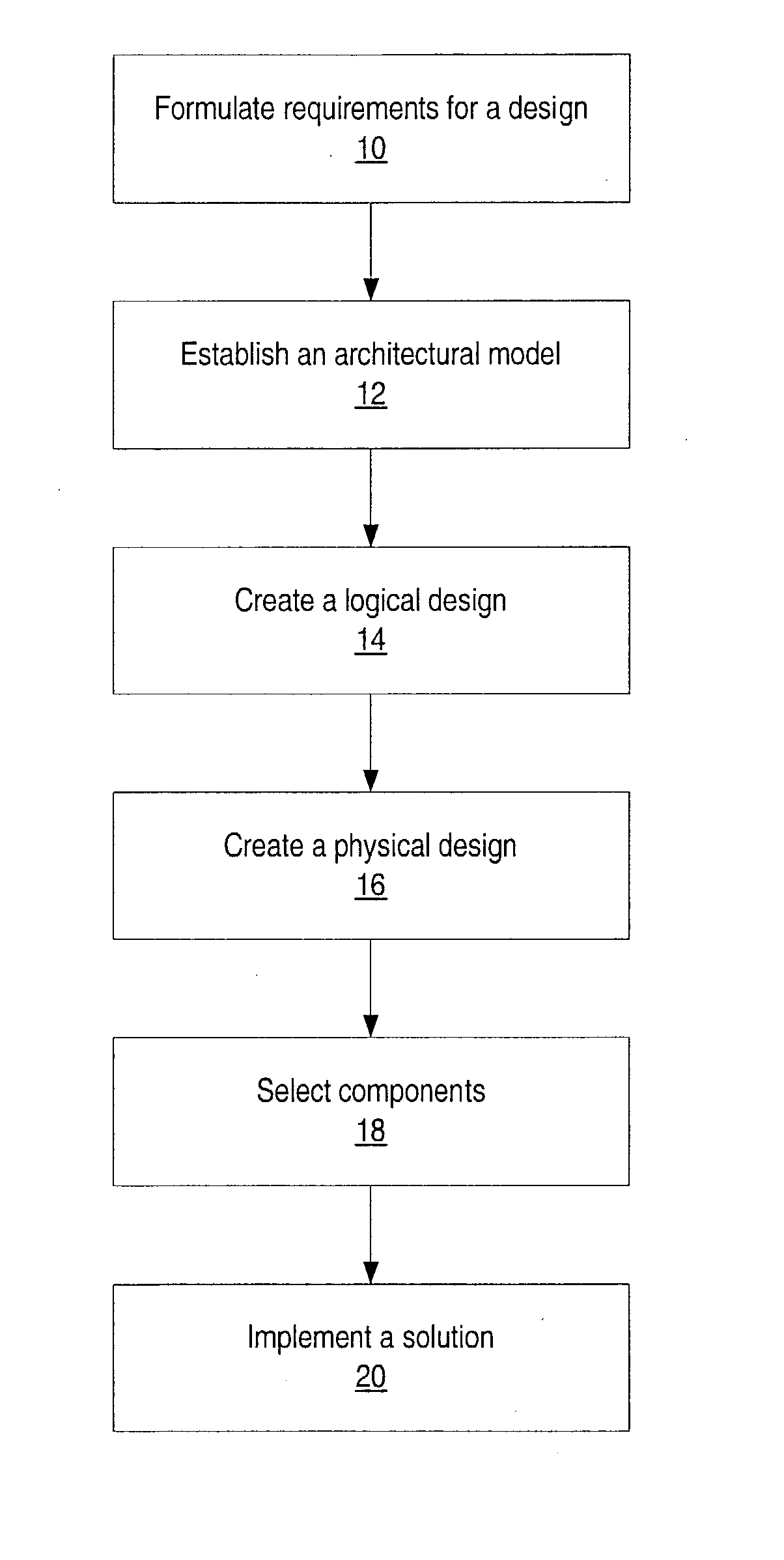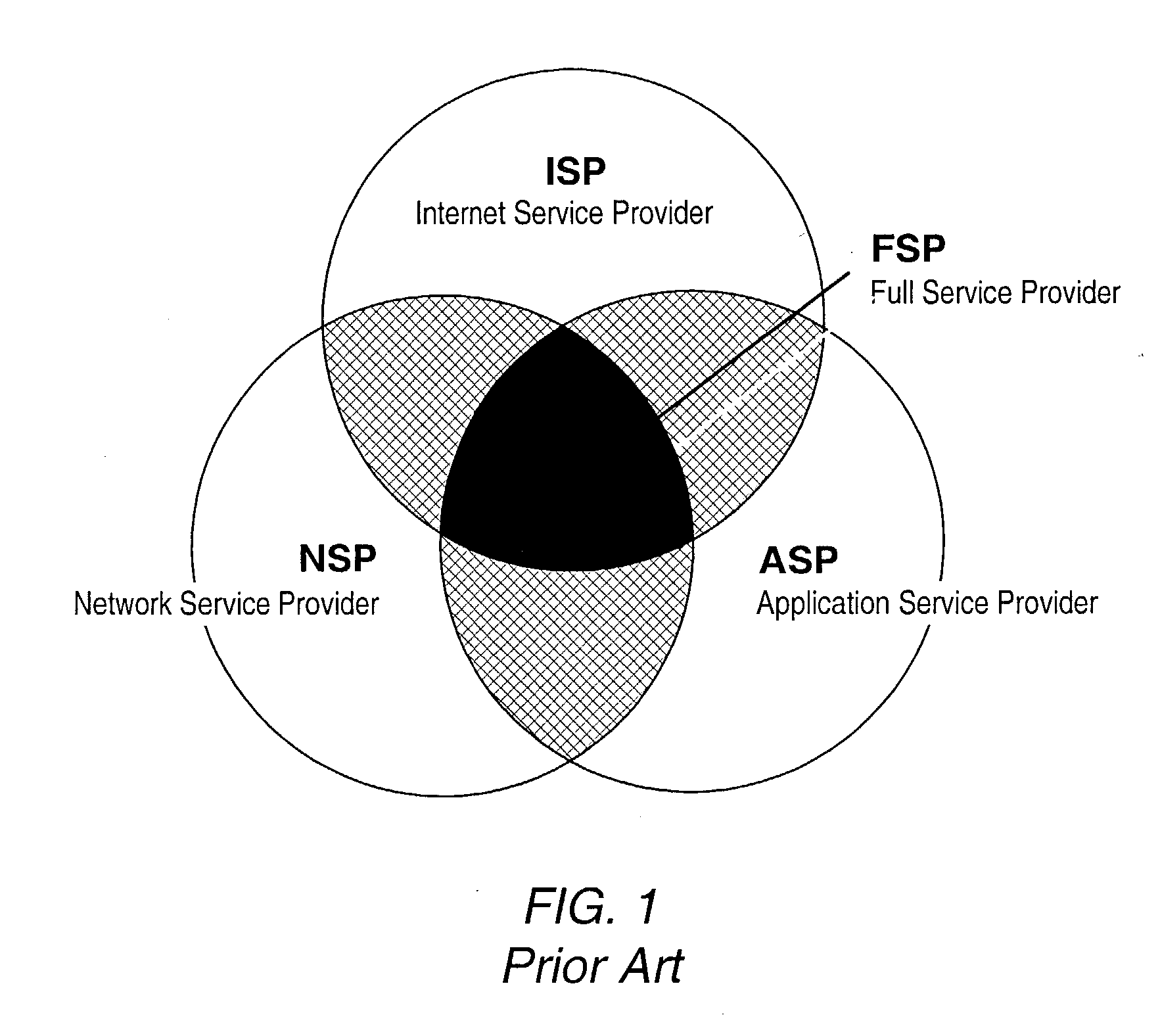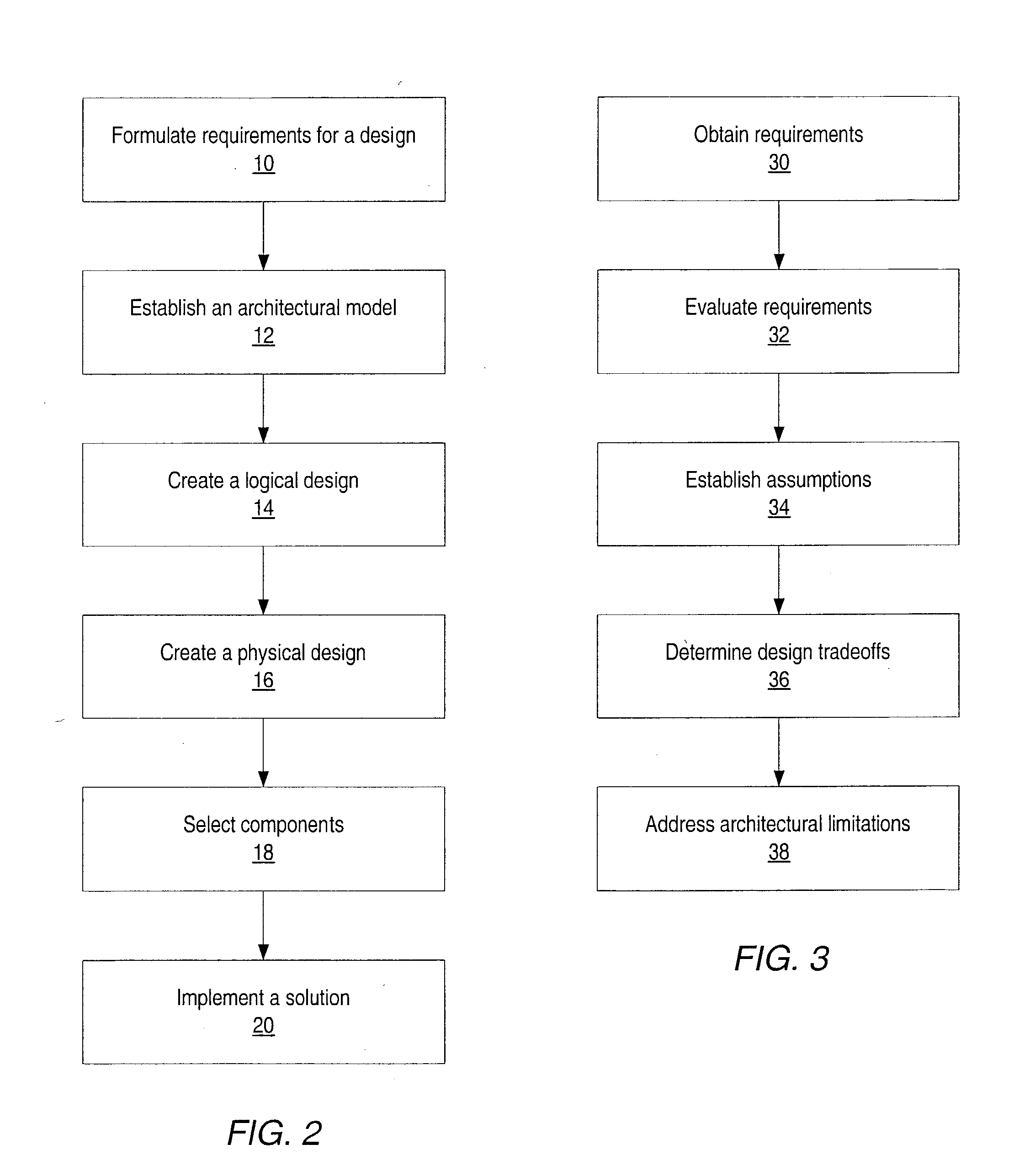System and method for designing, developing and implementing internet service provider architectures
a technology of internet service provider and architecture, applied in the field of network technology, can solve the problems of insufficient rapid response of isps to scale their system capacity or offer new services, inflexibleness to allow rapid changes or additions to service offerings, and costly implementation of stovepipe internet services infrastructur
- Summary
- Abstract
- Description
- Claims
- Application Information
AI Technical Summary
Problems solved by technology
Method used
Image
Examples
Embodiment Construction
[0138] Embodiments of a system and method for designing, developing and implementing ISP architectures are described, as well as ISP architectures that may be designed and implemented using these embodiments. An Internet Service Provider (ISP) provides Internet services to business and residential subscribers, also referred to as users. ISPs provide basic services such as email, web hosting, and news. In addition, ISPs may offer value-added services such as calendars, address books, search engines, chat rooms, instant messages, etc.
[0139] In this document, a first section, Designing, Developing, and Implementing ISP Architectures, describes a system and method for designing, developing and implementing ISP architectures. In a second section, Internet Architecture for Service Providers, embodiments of an Internet architecture are described that establishes a framework for the development of, for example, multi-service ISPs, Application Service Providers (ASPs), advanced E-commerce si...
PUM
 Login to View More
Login to View More Abstract
Description
Claims
Application Information
 Login to View More
Login to View More - R&D
- Intellectual Property
- Life Sciences
- Materials
- Tech Scout
- Unparalleled Data Quality
- Higher Quality Content
- 60% Fewer Hallucinations
Browse by: Latest US Patents, China's latest patents, Technical Efficacy Thesaurus, Application Domain, Technology Topic, Popular Technical Reports.
© 2025 PatSnap. All rights reserved.Legal|Privacy policy|Modern Slavery Act Transparency Statement|Sitemap|About US| Contact US: help@patsnap.com



